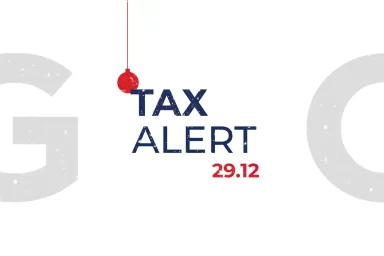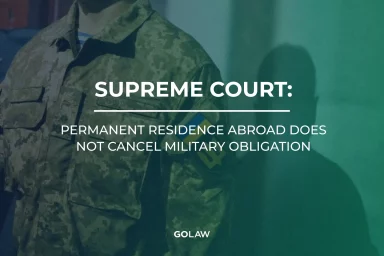How can a director resign without the consent of the general meeting of LLC shareholders? Algorithm of actions
Contents
Due to the full-scale war, the difficult situation in Ukraine creates unprecedented risks for businesses and their managers. Unfortunately, it is not uncommon for shareholders (owners) of a company to cease participating in its activities. This results in the director’s inability to exercise his/her powers of operational management of the company and the actual blocking of the possibility of making decisions that can only be approved by the shareholders. In particular, it concerns executing a significant transaction, decision-making on additional company financing, etc.
Dismissal may be the necessary and most appropriate step for a director to avoid possible negative consequences, both legal and reputational, for himself or herself and the company as a whole.
However, what should a director do if the company’s shareholders ignore the notice of the general meeting or do not decide to dismiss him?
Legislative regulation
Initially, it is worth noting that the law allows for two ways to structure the relationship with a director: by entering into a civil law agreement or an employment agreement (contract).
Suppose a director enters into a civil law contract. In that case, the termination of the legal relationship between the director and the company falls into the contractual area and should be resolved through the prism of contract law. Such a situation requires a separate analysis, as each contract’s grounds for termination may be individualized. In addition, such relations are not labor relations within the meaning of the law, and therefore the provisions of labor law on voluntary dismissal do not apply to such cases.
If we are talking about labor relations, it is worth noting that the relationship between the director and the company has labor and corporate aspects, which directly affects the possibility of his dismissal.
As of today, the answer to whether a director can be terminated as an officer is quite clear: the court cannot interfere with the company’s activities and oblige the shareholders to decide.
On the one hand, the director, as an employee, has the right to resign at will in accordance with the procedure established by Ukraine’s labor legislation. According to the Convention for the Protection of Human Rights and Fundamental Freedoms, no one shall be forced to perform forced or compulsory labor. This provision is extrapolated into Ukrainian legislation.
Thus, a director, as an employee, has the right to resign at will by submitting a respective application. However, there needs to be more to resolve the issue of his corporate responsibility as an officer, particularly regarding accounting, timely submission of financial statements, and other matters within his competence.
As a result, a company director does not have independent powers to decide on his or her dismissal, particularly given that dismissal requires a resolution of the general meeting of shareholders.
Filing a claim with the court to recognize the employment relationship as terminated
However, there is still something that can be done.
An effective way out of this situation is for the director to file a lawsuit with the court to declare the employment relationship terminated. But this raises several important issues.
Determining a dispute’s jurisdiction may be difficult, given the debate among lawyers and courts over its subject matter. Some argue in favor of commercial jurisdiction over such disputes due to their corporate aspect. In contrast, others, with good reason, insist on civil jurisdiction due to the termination of employment. The practice of the higher courts in this regard is often changing.
In particular, the decision of the Grand Chamber of the Supreme Court of 14 June 2023 in case No. 448/362/22 states that a dispute over the termination of the employment contract of the sole executive body (director) of an LLC is a dispute arising out of corporate relations, as it relates to the exercise by the general meeting of this company of its competence to form an executive body and terminate its powers. Therefore, such a dispute relates to the management of a legal entity and falls within the jurisdiction of the commercial court.
The Supreme Court’s practice clearly indicates that it has commercial jurisdiction over such disputes. However, this position is quite controversial and is questioned by some judges. Therefore, in parallel, such disputes are successfully considered by both commercial and civil jurisdictions, as evidenced by the current court practice.
However, the chances of the claim being returned by both commercial and civil courts are quite high, so when filing and preparing a claim for recognition of employment relations as terminated, it is necessary to properly substantiate the dispute’s jurisdictional affiliation, determine the dispute’s subject matter and claims, and take into account the Supreme Court’s current practice.
Collecting evidence
The next important step is to collect evidence. In order to form a high-quality legal position for the court, it is necessary to initiate and document the dismissal of the director in compliance with the applicable law and the company’s charter.
First, it is necessary to initiate a general meeting of the company’s shareholders by the charter’s and the law’s requirements. It is important to notify all company shareholders in an appropriate manner and to record that the notice of convening the general meeting was sent to the shareholders. The resignation letter and the notice of convening the general meeting of shareholders must be executed by the law and within the time limits set out in the charter and law. All evidence of mailings, documents indicating track numbers of letters, descriptions of attachments, etc., should be kept.
If the participants ignore the general meeting, which is currently the most common case, it is necessary to record their absence. In particular, an effective tool may be to engage a lawyer to prepare a written confirmation of the participants’ absence from the general meeting initiated by the director.
Thus, to achieve a favorable decision in court, it will be necessary to prove to the court that the specified procedure for dismissal of a director has been followed with the provision of all supporting documents, including proof:
- the fact that a resignation letter was submitted in accordance with labor law;
- the fact that the procedure for convening a general meeting of shareholders was followed;
- the fact that the general meeting did not pass a resolution to dismiss the director or failed to attend the meeting.
Exclusion of information about the director from the Unified State Register
It should be noted that the State Enterprise “National Information Systems” has recently improved the software of the Unified State Register (the “USR”) in terms of the technical possibility of removing information about the director of a legal entity. Previously, such a possibility did not technically exist, and even if a court decision on dismissal was available, the company’s director was still reflected in the USR.
The court practice regarding excluding information about the director from the USR is diverse. The Supreme Court, in its ruling of 24 December 2019 in case No. 758/1861/18 (proceedings No. 61-49113св18), noted that the fact that termination of the director’s powers as the legislator links an official to the moment of making the relevant entry in the USR.
At the same time, the director doesn’t need to file a preliminary application with the registrar before filing a lawsuit, as he or she may directly file a court decision that results in changes to the USR. In addition, the satisfaction of the request to remove the entry of the director from the Unified State Register is consistent with the objectives of the judicial proceedings.
Therefore, only a court decision that entails such a change in the information in the Unified State Register may serve as a basis for removing information about a company’s director from the Unified State Register.
Court decision. What’s next?
Once the decision has become effective, it is necessary to take several formal steps to inform the state registrar, counterparties, the bank, and other third parties of the fact of the director’s dismissal.
In particular, a possible option is to announce the dismissal of the company’s director in official publications, notify the counterparties, statistical authorities, and the servicing bank in writing, etc.
Conclusions
Thus, dismissing a director without the consent of the company’s shareholders requires a comprehensive approach, combining labor and corporate aspects. Although there have been some positive developments in practice and regulation regarding the dismissal of directors without the consent of the general meeting, the issue still needs to be completed, which in practice creates several problems for the director and requires him to go to court to protect his rights.
If you need legal advice, please fill out the form below to request it ⬇️

Oles Riabchuk
Senior Associate, Attorney at Law
- Contacts
- 31/33 Kniaziv Ostrozkykh St, Zorianyi Business Center, Kyiv, Ukraine, 01010
- o.riabchuk@golaw.ua
- +38 044 581 1220
Get in touch
To get a consultation, please fill out the form below or call us right away:Sign up to be aware
New achievements are inspired by information. GO further, don’t miss out GOLAW news and legal alerts
Our expertise
-
- Energy and Natural Resources
- Antitrust and Competition
- Banking and Finance
- Compliance, Corporate Governance and Risk Management
- Corporate and M&A
- Criminal and White Collar Defence
- Defense in Anti-corruption procedures and regulations
- Labor and Employment
- Natural Resources and Environment
- Government Relations (GR)
- Insolvency and Corporate Recovery
- Intellectual property
- International trade
- Legal support of business and private Сlients in Germany
- Litigation and dispute resolution
- Private clients
- Real Estate and Construction
- Restructuring, Claims and Recoveries
- Martial Law
- Tax and Customs
-
- Agribusiness
- Aviation
- Chemical industry
- Engineering, Construction and Building Materials
- Environment and Natural Resources
- Financial institutions
- IT and AI
- Industry and manufacturing
- Healthcare industries, Life sciences and Pharmaceuticals
- Media, Entertainment, Sports and Gambling
- Retail, FMCG and E-Commerce
- Transport and Logistics
We use cookies to improve performance of our website and your user experience.
Cookies policy
Cookies settings








